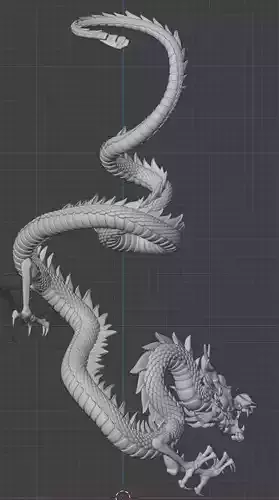1/5
Image and Origin: The image of the Chinese dragon is a fusion of features from various animals, known as the Nine Similarities: its horns resemble those of a deer, its head that of a camel, its eyes those of a rabbit, its neck that of a snake, its belly that of a clam, its scales those of a fish, its claws those of an eagle, its paws those of a tiger, and its ears those of an ox. Its origin is related to the ancient totem worship. According to legend, after Emperor Huang unified the Central Plains, he combined the totem features of various tribes and created the image of the dragon, which became the totem worshipped by the Chinese nation in common. Symbolic meaning: Imperial Power and Might: In the feudal era, the dragon was the symbol of the emperor, and the emperor was called the True Dragon Son of Heaven. The dragon robe and the dragon throne were exclusive to the imperial power. Auspiciousness and Good Fortune: The dragon is regarded as a auspicious beast that can bring rain and a bountiful harvest. In folk culture, there are sayings such as the dragon and phoenix bring good fortune and the spirit of the dragon and horse, symbolizing good fortune, health, and vitality. Wisdom and Power: Dragons can ride the clouds and control the wind and rain, symbolizing extraordinary wisdom and boundless power. Myths and Legends: In Taoist mythology, the Dragon Kings of the Four Seas - the East Sea, the West Sea, the South Sea, and the North Sea - each govern their respective seas and are responsible for controlling the clouds and rain. The Nine Sons of the Dragon: Legend has it that the dragon has nine sons, but none of them take on the form of a dragon. Each has different hobbies and specialties. Their images often appear on Chinese architecture and utensils (such as Qiuniu, who loves music, Yazhi, who loves killing, and Chao Feng, who loves danger, etc.).
REVIEWS & COMMENTS
accuracy, and usability.





